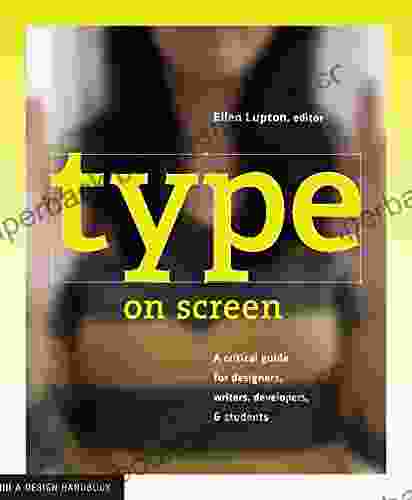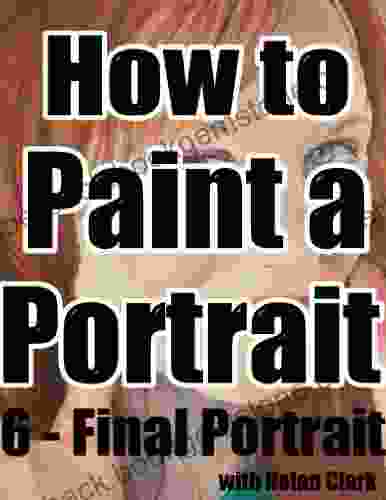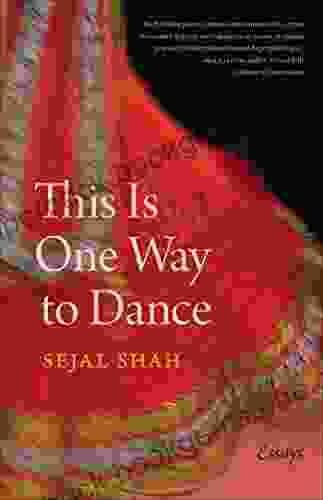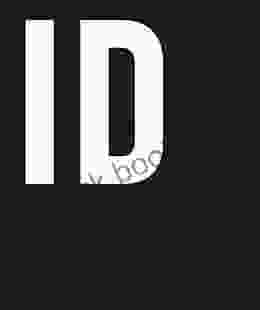A Comprehensive Guide to Design Briefs for Designers, Writers, Developers, and Students

4.3 out of 5
| Language | : | English |
| File size | : | 28272 KB |
| Screen Reader | : | Supported |
| Print length | : | 209 pages |
| Lending | : | Enabled |
In the realm of creative collaboration, the design brief serves as a crucial roadmap, guiding designers, writers, developers, and students towards successful project outcomes. A well-crafted brief lays the foundation for effective communication, ensuring that all stakeholders are aligned and working towards a shared vision. This comprehensive guide will delve into the intricacies of design briefs, empowering you with the knowledge and skills to create impactful briefs that drive extraordinary design solutions.
Understanding the Purpose and Importance of Design Briefs
A design brief is a concise and comprehensive document that outlines the project's objectives, scope, target audience, deliverables, and timeline. It serves as a single source of truth, ensuring that everyone involved in the project has a clear understanding of the project's requirements and expectations.
By investing time and effort in creating a thorough design brief, you can reap numerous benefits, including:
- Enhanced project clarity: A well-defined brief eliminates ambiguity and ensures that everyone involved has a shared understanding of the project's goals and objectives.
- Effective communication: A comprehensive brief facilitates seamless communication between designers, writers, developers, and clients, minimizing the risk of misunderstandings and misinterpretations.
- Accurate project estimates: A detailed brief provides a solid foundation for accurate project estimates, ensuring that resources are allocated appropriately and timelines are realistic.
- Improved collaboration: A well-crafted brief fosters collaboration by providing a shared framework for discussion, decision-making, and problem-solving.
- Increased project success: A comprehensive brief lays the groundwork for successful project outcomes by aligning stakeholders, minimizing risks, and ensuring that the final design meets the client's expectations.
Key Elements of an Effective Design Brief
Crafting an effective design brief requires careful consideration of several key elements:
- Project Overview: This section provides a concise summary of the project's purpose, objectives, and background information.
- Target Audience: Clearly define the intended audience for the design solution, including their demographics, psychographics, and behavioral patterns.
- Design Problem: Articulate the specific design problem that needs to be addressed, outlining the challenges and opportunities.
- Design Goals: Establish clear and measurable goals for the design solution, ensuring that they align with the project's objectives and target audience.
- Design Requirements: Specify the functional and technical requirements that the design solution must meet, including any specific constraints or limitations.
- Design Deliverables: Outline the specific deliverables that will be produced as part of the project, such as prototypes, mockups, or final design files.
- Timeline: Establish a realistic timeline for the project, including key milestones and deadlines.
- Budget: If applicable, specify the budget allocated for the project, ensuring that it is sufficient to meet the project's requirements.
Best Practices for Creating Design Briefs
To maximize the effectiveness of your design briefs, follow these best practices:
- Involve stakeholders early: Engage all relevant stakeholders in the brief development process to ensure their input and buy-in.
- Be clear and concise: Use precise and unambiguous language, avoiding jargon or technical terms that may not be understood by all stakeholders.
- Use visual aids: Incorporate visual aids such as mood boards, sketches, or wireframes to illustrate the desired design direction and aesthetic.
- Provide context and background: Include relevant background information, research findings, or market analysis to provide context and rationale for the design decisions.
- Set realistic goals and timelines: Ensure that the goals and timelines outlined in the brief are achievable and align with the project's resources.
- Get feedback and iterate: Share the draft brief with stakeholders for feedback and make necessary revisions to ensure alignment and clarity.
Tips for Designers, Writers, Developers, and Students
Depending on your role, here are some additional tips for effectively utilizing design briefs:
For Designers:
- Understand the design intent: Carefully read and comprehend the design brief to grasp the client's vision and objectives.
- Translate requirements into design solutions: Translate the functional and technical requirements outlined in the brief into innovative and user-centric design solutions.
- Present your ideas clearly: Communicate your design ideas effectively through sketches, prototypes, or mockups, ensuring that they align with the brief's requirements.
For Writers:
- Craft compelling copy: Use persuasive language and storytelling techniques to create engaging and informative copy that meets the brief's requirements.
- Adhere to design principles: Ensure that your written content conforms to the design principles outlined in the brief, considering factors such as readability, tone of voice, and visual hierarchy.
- Collaborate with designers: Work closely with designers to ensure that your written content seamlessly integrates with the overall design solution.
For Developers:
- Translate designs into code: Skillfully translate design mockups and prototypes into functional code that meets the specifications outlined in the brief.
- Prioritize user experience: Focus on creating a seamless and intuitive user experience, ensuring that the final product aligns with the brief's target audience and goals.
- Test and iterate: Conduct thorough testing to ensure that the developed solution meets the functional and performance requirements specified in the brief.
For Students:
- Practice creating briefs: Seize every opportunity to practice creating design briefs, honing your skills in defining project scope, goals, and requirements.
- Seek feedback from instructors and peers: Share your design briefs with instructors and peers to gain valuable feedback and improve your understanding of effective brief writing.
- Present your work confidently: Develop strong presentation skills to confidently present your design briefs and communicate your ideas effectively.
Design briefs are indispensable tools that empower designers, writers, developers, and students to create exceptional design solutions. By adhering to the principles outlined in this comprehensive guide, you can craft effective briefs that lay the foundation for successful projects. Remember to involve stakeholders early, be clear and concise, use visual aids, provide context, set realistic goals, get feedback, and tailor your approach based on your role. With a well-written design brief, you can embark on a collaborative journey towards innovative and impactful design outcomes.
4.3 out of 5
| Language | : | English |
| File size | : | 28272 KB |
| Screen Reader | : | Supported |
| Print length | : | 209 pages |
| Lending | : | Enabled |
Do you want to contribute by writing guest posts on this blog?
Please contact us and send us a resume of previous articles that you have written.
 Best Book
Best Book Page Flip
Page Flip Bookshelf
Bookshelf Literary loom
Literary loom Chapter
Chapter Bookish
Bookish PageTurner
PageTurner Bibliophile
Bibliophile Story
Story Inkwell
Inkwell Bookworm
Bookworm Labyrinth
Labyrinth Plot Twist
Plot Twist Prose
Prose Paperback
Paperback Storyteller
Storyteller Sanctuary
Sanctuary Fiction
Fiction Reading
Reading Chronicle
Chronicle Read
Read Kerry Bogert
Kerry Bogert Lesley Downer
Lesley Downer Marty Noble
Marty Noble Alan O Brien
Alan O Brien Diane Tuckman
Diane Tuckman Kenya Hunt
Kenya Hunt Hayao Miyazaki
Hayao Miyazaki Kristen Dutkiewicz
Kristen Dutkiewicz Chris Nashawaty
Chris Nashawaty Stephen Mills
Stephen Mills Gerri Leen
Gerri Leen Ruby Dixon
Ruby Dixon Staci Swider
Staci Swider Wesley Jones
Wesley Jones Stuart D Paine
Stuart D Paine George Lopez
George Lopez Tori Rodriguez
Tori Rodriguez Joseph Lanza
Joseph Lanza Lucinda Fleeson
Lucinda Fleeson Kao Kalia Yang
Kao Kalia Yang James Joyce
James Joyce Barry Moser
Barry Moser Jay Armstrong
Jay Armstrong Yiyun Li
Yiyun Li D A Miller
D A Miller Bet Borgeson
Bet Borgeson Elena Gorokhova
Elena Gorokhova Jonathan Strahan
Jonathan Strahan Becky Gilhespie
Becky Gilhespie Deanne Stillman
Deanne Stillman Vanessa Zoltan
Vanessa Zoltan Nathalie Kalbach
Nathalie Kalbach Jack Finney
Jack Finney Ben J Harris
Ben J Harris Lowell Angell
Lowell Angell Joan Williams
Joan Williams Momoyo Nishimura
Momoyo Nishimura Thomas P Stafford
Thomas P Stafford Ebony Diamonds
Ebony Diamonds Kathy Mckeon
Kathy Mckeon Bill Lee
Bill Lee Barbara Hambly
Barbara Hambly Colin Falconer
Colin Falconer Dave Hickey
Dave Hickey Bonny Snowdon
Bonny Snowdon Ravyn Wilde
Ravyn Wilde Bob Herbert
Bob Herbert Mary Peters
Mary Peters Barbara Chase Riboud
Barbara Chase Riboud Theda Perdue
Theda Perdue Tim Rayborn
Tim Rayborn Barbara Delinsky
Barbara Delinsky George H Gisser
George H Gisser Dean Koontz
Dean Koontz Valerie L Winslow
Valerie L Winslow J C Sum
J C Sum Bob Drury
Bob Drury Tove Ditlevsen
Tove Ditlevsen Ben Eastham
Ben Eastham Chris Roel
Chris Roel Marie Beardmore
Marie Beardmore Harvey Arden
Harvey Arden Robert Henderson
Robert Henderson Seymour Morris Jr
Seymour Morris Jr Stanislaw Lem
Stanislaw Lem Sheila Montilla
Sheila Montilla D L Harrison
D L Harrison Sejal Shah
Sejal Shah Sara Boccaccini Meadows
Sara Boccaccini Meadows Dana Fox
Dana Fox Matthew Luzi
Matthew Luzi Beth Tondreau
Beth Tondreau Sergio Toppi
Sergio Toppi Betsy Prioleau
Betsy Prioleau Dan Dietz
Dan Dietz Bob Dow
Bob Dow Bob Normand
Bob Normand Yahrah St John
Yahrah St John Elisabeth Elliot
Elisabeth Elliot Laura Ling
Laura Ling Helen Thorpe
Helen Thorpe Tim Powers
Tim Powers Sir Richard Francis Burton
Sir Richard Francis Burton John E Siers
John E Siers Ian J Malone
Ian J Malone Tim Rangnow
Tim Rangnow Rebecca Sugar
Rebecca Sugar Rexford Govorchin
Rexford Govorchin Bernth Lindfors
Bernth Lindfors Mitche Graf
Mitche Graf Barry Kirwan
Barry Kirwan Lynne Anne Blom
Lynne Anne Blom Pam Flowers
Pam Flowers Barry Sonnenfeld
Barry Sonnenfeld Stuart Williams
Stuart Williams Jennie Smallenbroek
Jennie Smallenbroek John Howard Griffin
John Howard Griffin Ben Corbett
Ben Corbett Stephen Boss
Stephen Boss Sophia Rolle
Sophia Rolle Dori Jones Yang
Dori Jones Yang Russell Foureagles
Russell Foureagles Wendy Tait
Wendy Tait Erica Davies
Erica Davies Leo Buijs
Leo Buijs Michael Haag
Michael Haag Ella Frances Sanders
Ella Frances Sanders Bich Minh Nguyen
Bich Minh Nguyen Bob Dennard
Bob Dennard Leanne Kitchen
Leanne Kitchen Steve Berry
Steve Berry Margaret Kessler
Margaret Kessler William Lidwell
William Lidwell Leon Smith
Leon Smith Bj Wane
Bj Wane Betsy Beier
Betsy Beier Laurie Gough
Laurie Gough Matthew Morgante
Matthew Morgante Stephanie Claytor
Stephanie Claytor Bella Blair
Bella Blair C Pierce Salguero
C Pierce Salguero Wilkie Collins
Wilkie Collins Jodi Staniunas Hopper
Jodi Staniunas Hopper Bob Elliott
Bob Elliott Jan V White
Jan V White Charles Sturt
Charles Sturt Becky Chambers
Becky Chambers Barbara Demick
Barbara Demick Bill Arnott
Bill Arnott James Ulyatt
James Ulyatt Betty Dooley Awbrey
Betty Dooley Awbrey Zora O Neill
Zora O Neill Nancy Kress
Nancy Kress Bev Sellars
Bev Sellars Gary Wasserman
Gary Wasserman Barack Obama
Barack Obama Joanne Hutchinson
Joanne Hutchinson Tim W Jackson
Tim W Jackson Tim Stokes
Tim Stokes Terry Pratchett
Terry Pratchett Dennis E Taylor
Dennis E Taylor Charlotte Fiell
Charlotte Fiell John Muir
John Muir Katie Dowe
Katie Dowe Barbara Grizzuti Harrison
Barbara Grizzuti Harrison Linda Lael Miller
Linda Lael Miller Benjamin John Coleman
Benjamin John Coleman Jonathan Waterman
Jonathan Waterman Jpinsiders
Jpinsiders Barbara Bradley
Barbara Bradley Beverly Jenkins
Beverly Jenkins Iris Murdoch
Iris Murdoch Ottessa Moshfegh
Ottessa Moshfegh Donald N Thompson
Donald N Thompson Betty Halbreich
Betty Halbreich Tiana Laveen
Tiana Laveen Suzette Riddick
Suzette Riddick Joseph Heywood
Joseph Heywood Jamie Davis
Jamie Davis John Ruskin
John Ruskin David V Jervis
David V Jervis Lucy Jane Bledsoe
Lucy Jane Bledsoe Rosemary Kimani
Rosemary Kimani David Byrne
David Byrne Noel Riley Fitch
Noel Riley Fitch Talia Hibbert
Talia Hibbert Partha Mitter
Partha Mitter Mark Tufo
Mark Tufo James Haddock
James Haddock Michael Anderle
Michael Anderle Rita Benn
Rita Benn Yoshitaka Amano
Yoshitaka Amano Rainer Maria Rilke
Rainer Maria Rilke Ea Hooper
Ea Hooper Tammy Ruggles
Tammy Ruggles Eric Rauchway
Eric Rauchway Laney Salisbury
Laney Salisbury Nelson Demille
Nelson Demille Diane Duane
Diane Duane Poppy Evans
Poppy Evans John Scarne
John Scarne William Alexander
William Alexander Olive Yong
Olive Yong Philip Guston
Philip Guston Hope Hart
Hope Hart Faye Kellerman
Faye Kellerman Blair Howard
Blair Howard Barbara Totaro
Barbara Totaro Ben Shahn
Ben Shahn Wayne Moniz
Wayne Moniz Tony Horwitz
Tony Horwitz Jamie Carter
Jamie Carter F Scott Fitzgerald
F Scott Fitzgerald Jenna Fischer
Jenna Fischer Individual Way
Individual Way Samuel Peralta
Samuel Peralta Bob Martin
Bob Martin Barbie Scott
Barbie Scott Steve Huston
Steve Huston Diane Gensler
Diane Gensler Claude Lanzmann
Claude Lanzmann Laurent Bolard
Laurent Bolard Jordan Marie
Jordan Marie Linda Nochlin
Linda Nochlin Ken Browar
Ken Browar Melissa Rivers
Melissa Rivers Richard Sorger
Richard Sorger Fania E Davis
Fania E Davis Chad Zunker
Chad Zunker Theo Farrington
Theo Farrington Collins Dictionaries
Collins Dictionaries Beryl Markham
Beryl Markham George Schindler
George Schindler Blake Farha
Blake Farha Clifford D Simak
Clifford D Simak Brad Lee
Brad Lee Steve Ryfle
Steve Ryfle James Grady
James Grady Stewart M Green
Stewart M Green Mary Matsuda Gruenewald
Mary Matsuda Gruenewald Kayla Arora
Kayla Arora Dalili
Dalili Lonely Planet
Lonely Planet Ben Box
Ben Box Khadijah J
Khadijah J Paul S Leland
Paul S Leland Kevin Hart
Kevin Hart Douglas Brooke Wheelton Sladen
Douglas Brooke Wheelton Sladen Barrington Barber
Barrington Barber Bolu Babalola
Bolu Babalola Boris Mihailovic
Boris Mihailovic Wassily Kandinsky
Wassily Kandinsky Conn Iggulden
Conn Iggulden John H Vanderpoel
John H Vanderpoel Patrick Symmes
Patrick Symmes Mario Rizzi
Mario Rizzi Bette Howland
Bette Howland Carol Huber Cypher
Carol Huber Cypher Bobby Brown
Bobby Brown Bianca Del Rio
Bianca Del Rio Lori Wilde
Lori Wilde Elaine A Clark
Elaine A Clark Robert Lanz
Robert Lanz Billie Holiday
Billie Holiday Jane Pek
Jane Pek Tom Wiener
Tom Wiener Spencer Shaw
Spencer Shaw Nick Petrie
Nick Petrie Kyle Froman
Kyle Froman Paraluman S Aspillera
Paraluman S Aspillera Matthew J Milliner
Matthew J Milliner Simon Turney
Simon Turney Bayard Taylor
Bayard Taylor Barbara Raue
Barbara Raue Richard L Leza Sr
Richard L Leza Sr Brad Taylor
Brad Taylor Lynne Olson
Lynne Olson Bob Leszczak
Bob Leszczak Ben Street
Ben Street Rohan M Vider
Rohan M Vider Ernst Rettelbusch
Ernst Rettelbusch Tom Wilson
Tom Wilson Veda Austin
Veda Austin Gillian Gloyer
Gillian Gloyer Dan Moren
Dan Moren Harmon Cooper
Harmon Cooper Gabrielle Hamilton
Gabrielle Hamilton Eddie Chambers
Eddie Chambers Bella Martin
Bella Martin Keith Houston
Keith Houston Benjamin Drake
Benjamin Drake Basil Johnston
Basil Johnston David Elliot Cohen
David Elliot Cohen Marina Warner
Marina Warner Orestes Lorenzo
Orestes Lorenzo Daniel Rachel
Daniel Rachel Tiana Bighorse
Tiana Bighorse David Airey
David Airey Behrouz Boochani
Behrouz Boochani Jessie Knadler
Jessie Knadler Benjamin Hochman
Benjamin Hochman Mark Crilley
Mark Crilley Ibl Press
Ibl Press Robert Muirhead
Robert Muirhead Ian Chilvers
Ian Chilvers Hillary Jordan
Hillary Jordan Baby Professor
Baby Professor Loring M Danforth
Loring M Danforth Benj Pasek
Benj Pasek Sarah Birnbach
Sarah Birnbach Charlise Lyles
Charlise Lyles Michael J Hayde
Michael J Hayde Jonathan Lopez
Jonathan Lopez John Mulholland
John Mulholland Maxime J Durand
Maxime J Durand Nefertiti Austin
Nefertiti Austin Charlie Jane Anders
Charlie Jane Anders Bruce Hanington
Bruce Hanington Maggie Craft
Maggie Craft Helen Hoang
Helen Hoang Basilius Besler
Basilius Besler Tessa Miller
Tessa Miller Betsy Whyte
Betsy Whyte Beebe Bahrami
Beebe Bahrami Gabrielle Euvino
Gabrielle Euvino Maurice Samuels
Maurice Samuels Shane Mitchell
Shane Mitchell Zachary Leader
Zachary Leader Barney Nelson
Barney Nelson Shoko Tendo
Shoko Tendo Joseph Doddridge
Joseph Doddridge Peter Ustinov
Peter Ustinov Glynn Stewart
Glynn Stewart Joseph M Henninger
Joseph M Henninger Susan Herrmann Loomis
Susan Herrmann Loomis Dean A Kowalski
Dean A Kowalski Esmeralda Santiago
Esmeralda Santiago Josephine B Pasquarello
Josephine B Pasquarello Ruth Silvestre
Ruth Silvestre Bill Cotter
Bill Cotter Katja Petrowskaja
Katja Petrowskaja Phillip Maisel
Phillip Maisel Nolan Clark
Nolan Clark Fiona Peart
Fiona Peart Helmut Kopka
Helmut Kopka Hakeem M Oluseyi
Hakeem M Oluseyi Nikki Turner
Nikki Turner Merl Code
Merl Code Carol Sulcoski
Carol Sulcoski Deborah Forman
Deborah Forman Bil Donovan
Bil Donovan Michael Shaara
Michael Shaara Edward White
Edward White Dave Hill
Dave Hill Darrel Rees
Darrel Rees J Dominique
J Dominique Malala Yousafzai
Malala Yousafzai Beverly J Armento
Beverly J Armento Bart King
Bart King Emily Spivack
Emily Spivack Beau Riffenburgh
Beau Riffenburgh Robert E Hampson
Robert E Hampson Bill Plympton
Bill Plympton Bernice Lerner
Bernice Lerner Gavin Maxwell
Gavin Maxwell Ellen Tomaszewski
Ellen Tomaszewski James S A Corey
James S A Corey Keith Doyle
Keith Doyle Sandra Duran Wilson
Sandra Duran Wilson Jeremy Dronfield
Jeremy Dronfield William Ellis
William Ellis Bill Bryson
Bill Bryson Barbara Miller
Barbara Miller Tyler Perry
Tyler Perry Zongyan Hu
Zongyan Hu Tya Marie
Tya Marie Doug Risner
Doug Risner Toni Ann Johnson
Toni Ann Johnson Jason Sperb
Jason Sperb Ruth Superhal
Ruth Superhal Elisabeth Stevens
Elisabeth Stevens Bonnie Barker
Bonnie Barker Interweave Editors
Interweave Editors Bassey Ikpi
Bassey Ikpi Koloman Moser
Koloman Moser Ben D Over
Ben D Over Jonathan C Slaght
Jonathan C Slaght Philip Ball
Philip Ball Ulysses S Grant
Ulysses S Grant Matt Smith
Matt Smith Bill Bensley
Bill Bensley Cornelius C Kubler
Cornelius C Kubler Ashley Jaquavis
Ashley Jaquavis Ian Mcdonald
Ian Mcdonald Yvonne Blackwood
Yvonne Blackwood Robert Morkot
Robert Morkot Lorraine De Meaux
Lorraine De Meaux Mackenzie Phillips
Mackenzie Phillips Matthew Brehm
Matthew Brehm Blaise Corvin
Blaise Corvin Ros Per
Ros Per Tom Sito
Tom Sito Bernice L Mcfadden
Bernice L Mcfadden Larissa Pham
Larissa Pham Ben Strand
Ben Strand S L Rowland
S L Rowland Marvin Patchen
Marvin Patchen James Goddard
James Goddard Mary Lou Andre
Mary Lou Andre Brad Bussie
Brad Bussie Eric Gibson
Eric Gibson Sarah Hepola
Sarah Hepola Maura Spiegel
Maura Spiegel Tershia Lambrechts
Tershia Lambrechts Jane L Rosen
Jane L Rosen William A Kappele
William A Kappele Lauren Meisner
Lauren Meisner Robin Cormack
Robin Cormack Justin Woolley
Justin Woolley Chevonne Clarke Bryan
Chevonne Clarke Bryan Hal Erickson
Hal Erickson Micah Ian Wright
Micah Ian Wright Bac Hoai Tran
Bac Hoai Tran Eric Henze
Eric Henze Stephen C Baldwin
Stephen C Baldwin Sophie Cunningham
Sophie Cunningham Christopher Butler
Christopher Butler B V Larson
B V Larson Brent Eviston
Brent Eviston Lucee Joie
Lucee Joie Steven Campbell
Steven Campbell Beatrice Sonders
Beatrice Sonders Ben Coes
Ben Coes Michael Mammay
Michael Mammay Stephen Haff
Stephen Haff Barry Herniman
Barry Herniman Ben Hannam
Ben Hannam Terry Compton
Terry Compton Brian Burke
Brian Burke Barbara Casey
Barbara Casey Michael Doyle
Michael Doyle Birgit O Connor
Birgit O Connor Bebe Harper
Bebe Harper Michael Chatfield
Michael Chatfield Patricia Sands
Patricia Sands Denis Dutton
Denis Dutton John G Breslin
John G Breslin Charles A Perrone
Charles A Perrone Taylor Jenkins Reid
Taylor Jenkins Reid Sarah Mirk
Sarah Mirk Brandon Varnell
Brandon Varnell Monica Walters
Monica Walters Milind Mulick
Milind Mulick Bill H Myers
Bill H Myers Baoshu
Baoshu Bandana Ojha
Bandana Ojha Lena Corwin
Lena Corwin Hildegarde Mahoney
Hildegarde Mahoney Greg O Brien
Greg O Brien Barbara A Parish
Barbara A Parish Eva Tulene Watt
Eva Tulene Watt John Seed
John Seed Lexi Sundell
Lexi Sundell Shirtaloon
Shirtaloon Jenny Mckay
Jenny Mckay Debbie Rose Myers
Debbie Rose Myers Robert Crais
Robert Crais Michael Wise
Michael Wise J P Telotte
J P Telotte Bengie Molina
Bengie Molina Thomas S Hischak
Thomas S Hischak Jennifer Sewing
Jennifer Sewing Jennifer Wilson
Jennifer Wilson Billie Rae Bates
Billie Rae Bates Bonny Pierce Lhotka
Bonny Pierce Lhotka Blakely Little
Blakely Little Noret Flood
Noret Flood Joan Reardon
Joan Reardon Roman Mars
Roman Mars Bella Young
Bella Young Ceidrik Heward
Ceidrik Heward Deirdre Slattery
Deirdre Slattery Betsy Dillard Stroud
Betsy Dillard Stroud Jessica Marting
Jessica Marting C J Boyle
C J Boyle Paul Kendall
Paul Kendall Elissa Washuta
Elissa Washuta Bethany C Morrow
Bethany C Morrow Benjamin Lewin
Benjamin Lewin Saxon Andrew
Saxon Andrew Bill Winner
Bill Winner Paula Kamen
Paula Kamen Philip B Meggs
Philip B Meggs Maggie Ramsay
Maggie Ramsay Marie Killilea
Marie Killilea Peter Inglis
Peter Inglis Barry Lord
Barry Lord Eliot Greenspan
Eliot Greenspan Shing Schih
Shing Schih Mary Brave Bird
Mary Brave Bird Shanora Williams
Shanora Williams David E Lowe
David E Lowe Kolbie Blume
Kolbie Blume Jacinda Townsend
Jacinda Townsend Umm Zakiyyah
Umm Zakiyyah Jon Contino
Jon Contino Briana Wiles
Briana Wiles Catherine Ryan Hyde
Catherine Ryan Hyde Wayne Larsen
Wayne Larsen Greg Mitchell
Greg Mitchell Ian Nathan
Ian Nathan David Fisher
David Fisher Tracey Lange
Tracey Lange Mateo Askaripour
Mateo Askaripour Laura Furman
Laura Furman Barbara Davis
Barbara Davis Bley Hack
Bley Hack Michael Winter
Michael Winter Lisa Congdon
Lisa Congdon Robert Roskind
Robert Roskind Terry Lee Stone
Terry Lee Stone Florencia E Mallon
Florencia E Mallon Jules Verne
Jules Verne Edward Gibbon
Edward Gibbon Becky Stephen
Becky Stephen Grace Berry
Grace Berry Terese Marie Mailhot
Terese Marie Mailhot Ilan Stavans
Ilan Stavans Lucy Adlington
Lucy Adlington Silvia Marina Arrom
Silvia Marina Arrom Barbara Lewis
Barbara Lewis Phoebe Robinson
Phoebe Robinson Louis Wain
Louis Wain William Black
William Black Norman Lee
Norman Lee Saul Tanpepper
Saul Tanpepper Benjamin E Wise
Benjamin E Wise Tony Burton
Tony Burton Mariana Atencio
Mariana Atencio Mike Curato
Mike Curato
Light bulbAdvertise smarter! Our strategic ad space ensures maximum exposure. Reserve your spot today!

 Paulo CoelhoUnveiling the Intriguing Tale of A.J. Liebling's Hashish Smuggler in Penguin...
Paulo CoelhoUnveiling the Intriguing Tale of A.J. Liebling's Hashish Smuggler in Penguin... James GrayFollow ·18.1k
James GrayFollow ·18.1k Martin CoxFollow ·19.7k
Martin CoxFollow ·19.7k Forrest BlairFollow ·11.7k
Forrest BlairFollow ·11.7k Christian CarterFollow ·5.9k
Christian CarterFollow ·5.9k Douglas FosterFollow ·4.8k
Douglas FosterFollow ·4.8k Vernon BlairFollow ·7.5k
Vernon BlairFollow ·7.5k Brady MitchellFollow ·10.5k
Brady MitchellFollow ·10.5k Neal WardFollow ·10.2k
Neal WardFollow ·10.2k
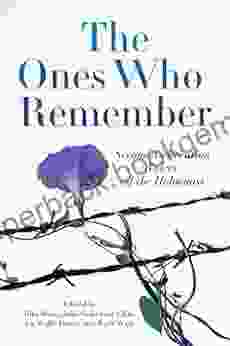
 Bryan Gray
Bryan GrayThe Second Generation: Voices of the Holocaust
The Holocaust was one of the most horrific...

 Douglas Foster
Douglas FosterWalking the Fields of the Newfoundland Dead
In the heart of the rolling countryside of...
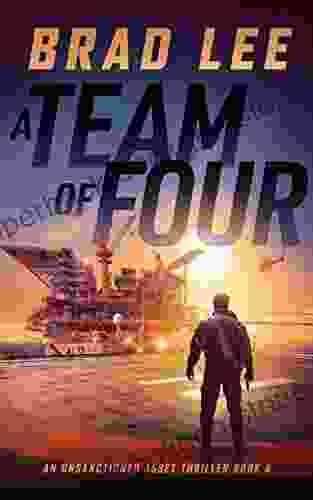
 Henry James
Henry JamesThe Unsanctioned Asset: A Gripping Thriller Set in a...
In the realm of espionage thrillers, The...
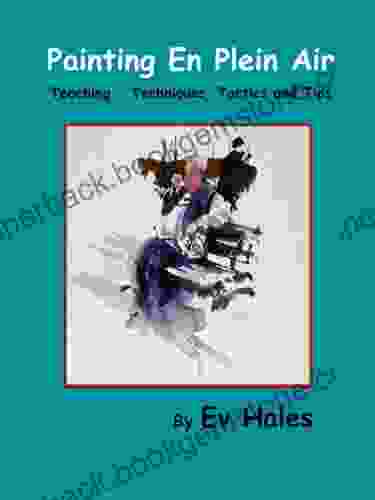
 Devon Mitchell
Devon MitchellPainting En Plein Air: Capturing the Essence of Nature on...
Painting en plein air, or painting...

 Damon Hayes
Damon HayesThe Life and Times of Dene Residential School Survivor
Residential schools...

 Steve Carter
Steve CarterIndia Artists and the Avant Garde: 1922-1947
The term "avant-garde" is...
4.3 out of 5
| Language | : | English |
| File size | : | 28272 KB |
| Screen Reader | : | Supported |
| Print length | : | 209 pages |
| Lending | : | Enabled |


